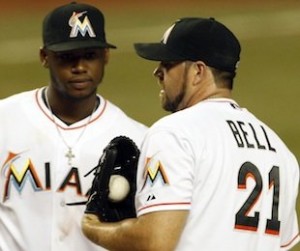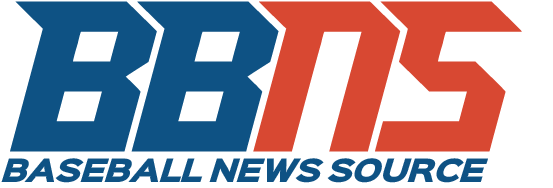 Baseball fans beware. It’s that time of the season again in Major League Baseball. The non-waiver trade deadline is July 31, and the final trade deadline (in which a player must first pass through waivers) is August 30.
Baseball fans beware. It’s that time of the season again in Major League Baseball. The non-waiver trade deadline is July 31, and the final trade deadline (in which a player must first pass through waivers) is August 30.
From now through the end of August, you should consider each trade rumor as just that – a rumor, which this time of year involves extensive speculation, some of which is credible but most of which is unfounded.
If you devour the news about your favorite team, contemplating who they might deal and who they could acquire, you are likely aware of the typical terminology in trade rumor talk.
It is difficult to tell which media sources are reliable and which ones are posting rumors solely to fill space.
Trade Deadline – What You Need to Know
For “Trade Deadline 101,” all you need to know is that the non-waiver trade deadline, which is July 31, means that teams can deal players without the need for them to clear waivers.
Unless, of course, a player has a no-trade clause to certain teams, or “10-5” rights, which dictate that any player with 10 years of major league service time and five years with the same team can determine if and where he is shipped.
When August 1 arrives, teams can still make trades through the end of that month, but players must pass through waivers.
If a team claims a player placed on waivers, the team that owns his rights can pull him back or allow that other club to add him to its roster.
Many players, including superstars, are put on waivers every August and pulled back by their teams, which are gauging potential off-season trade interest.
More Playoff Teams – More Trades
 The addition of a second wild card in each league will likely shape what happens now through the July and August trade deadlines.
The addition of a second wild card in each league will likely shape what happens now through the July and August trade deadlines.
Only three teams in the American League (Kansas City, Minnesota and Seatttle) and five teams in the National League (San Diego, Colorado, Chicago, Houston and Philadelphia) are out of contention for a wild card berth.
The Astros executed a 10-player trade today with Toronto, which is 45-47 and in danger of falling out of contention.
The Blue Jays received help for their injury-depleted rotation, receiving J.A. Happ along with right-handed relievers Brandon Lyon and David Carpenter.
As is common this time of year, rebuilding teams like Houston are gathering prospects.
The Astros received four minor leaguers, reliever Francisco Cordero, outfielder Ben Francisco and a player to be named later.
The Phillies, which have been decimated by injuries, are rumored to be shopping left-hander Cole Hamels, though some stories indicate they could offer him an extension. Ditto for Milwaukee and Zack Greinke.
The Cubs, which are in turbo rebuilding mode under new president Theo Epstein and general manager Jed Hoyer, are likely going to part ways with right-handed starting pitchers Ryan Dempster and Matt Garza. The Dodgers are said to be in heavy pursuit of Dempster while the Tigers are also interested.
Numerous teams are said to be in the running for Matt Garza, including the Red Sox.
However, media reports indicate that the some officials in the Red Sox front office don’t believe that the former Rays standout would be an upgrade over what is currently in the rotation.
Trade Rumors – Consider the Facts
This leads to a key point for baseball fans to consider when reading and contemplating trade rumors.
Place yourself in a general manager’s mind.
If you are Hoyer with the Cubs, your team is rebuilding so you don’t want to acquire three veterans for Dempster or Garza. You want young major leaguers who are under affordable team control and/or top prospects.
 Earlier in the week, media reports circulated that the Marlins approached the Red Sox about a deal involving Hanley Ramirez and Heath Bell for Carl Crawford and a prospect.
Earlier in the week, media reports circulated that the Marlins approached the Red Sox about a deal involving Hanley Ramirez and Heath Bell for Carl Crawford and a prospect.
Though Crawford will likely need Tommy John surgery on his left elbow (which has a partially torn ulnar collateral ligament), would it make sense for Boston to make this deal?
After this season, Crawford has five years and $102 million remaining on his contract.
Ramirez is signed through 2014 ($15.5 million in 2013 and $16 million in 2014) while the struggling Bell is due to receive $9 million in both 2013 and 2014.
The Red Sox, which have an array of promising outfield prospects (including Xander Bogaerts, one of the game’s most exciting prospect who will likely be moved from shortstop to a corner outfield spot), might benefit from escaping the length of Crawford’s deal, which lasts through 2017.
On natural talent alone, the 28-year-old Ramirez is a potential superstar, yet he is plagued by a lack of hustle and immaturity. This season, he is batting .246 with a .752 OPS, 14 home runs and 47 RBI.
Bell has 19 saves, but he is saddled with a 6.21 ERA and hitters have a .293 average against him. The 34-year-old right-hander has not duplicated the success he experienced while pitching for the Padres at the spacious Petco Park.
Perhaps Ramirez and Bell would benefit from a change of scenery. Crawford is 6-for-14 (.400) with six runs and three stolen bases since being activated from the disabled list and joining the Red Sox on Monday.
When you are playing armchair general manager, consider the risk. For Boston general manager Ben Cherington, maybe escaping the length of Crawford’s deal in exchange for two players whose contracts expire after 2014 would be ideal since it would create more payroll flexibility. In the short term, it would require gaining around $5 million in payroll.
Just like trade rumors themselves, there are no guarantees for success when you make a deal.
